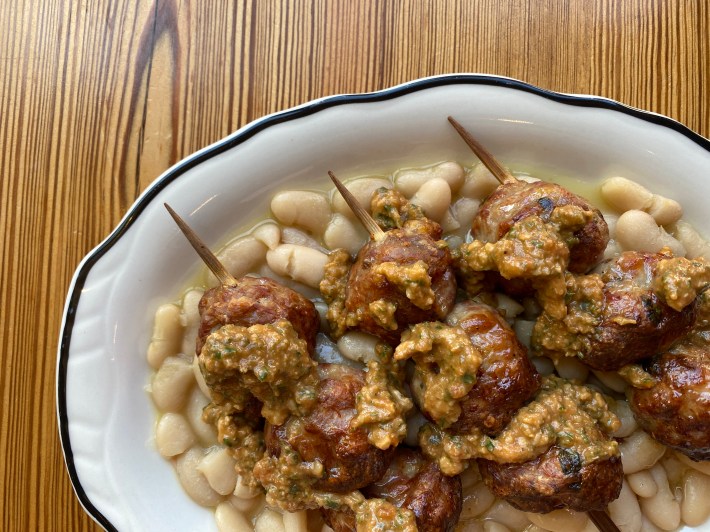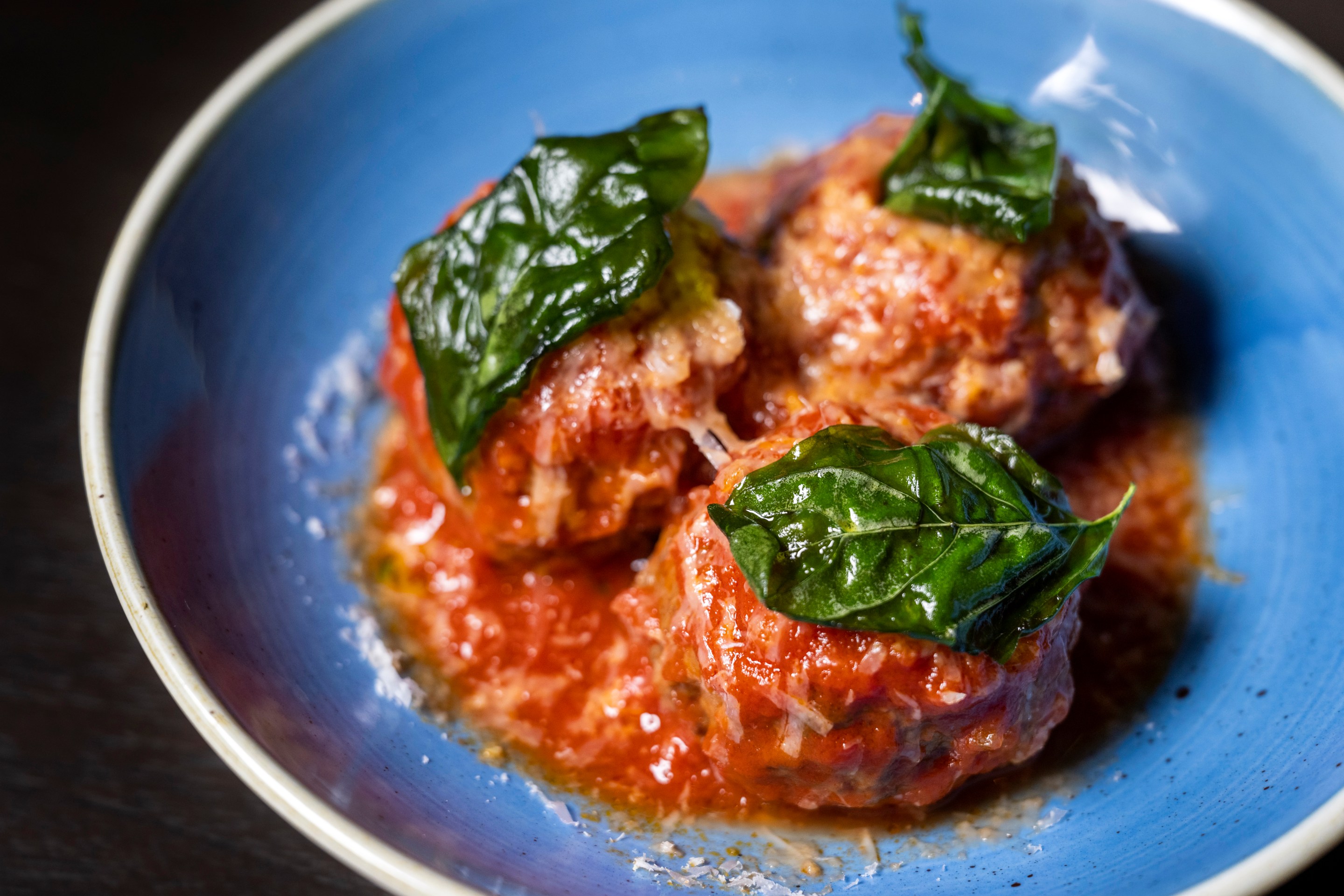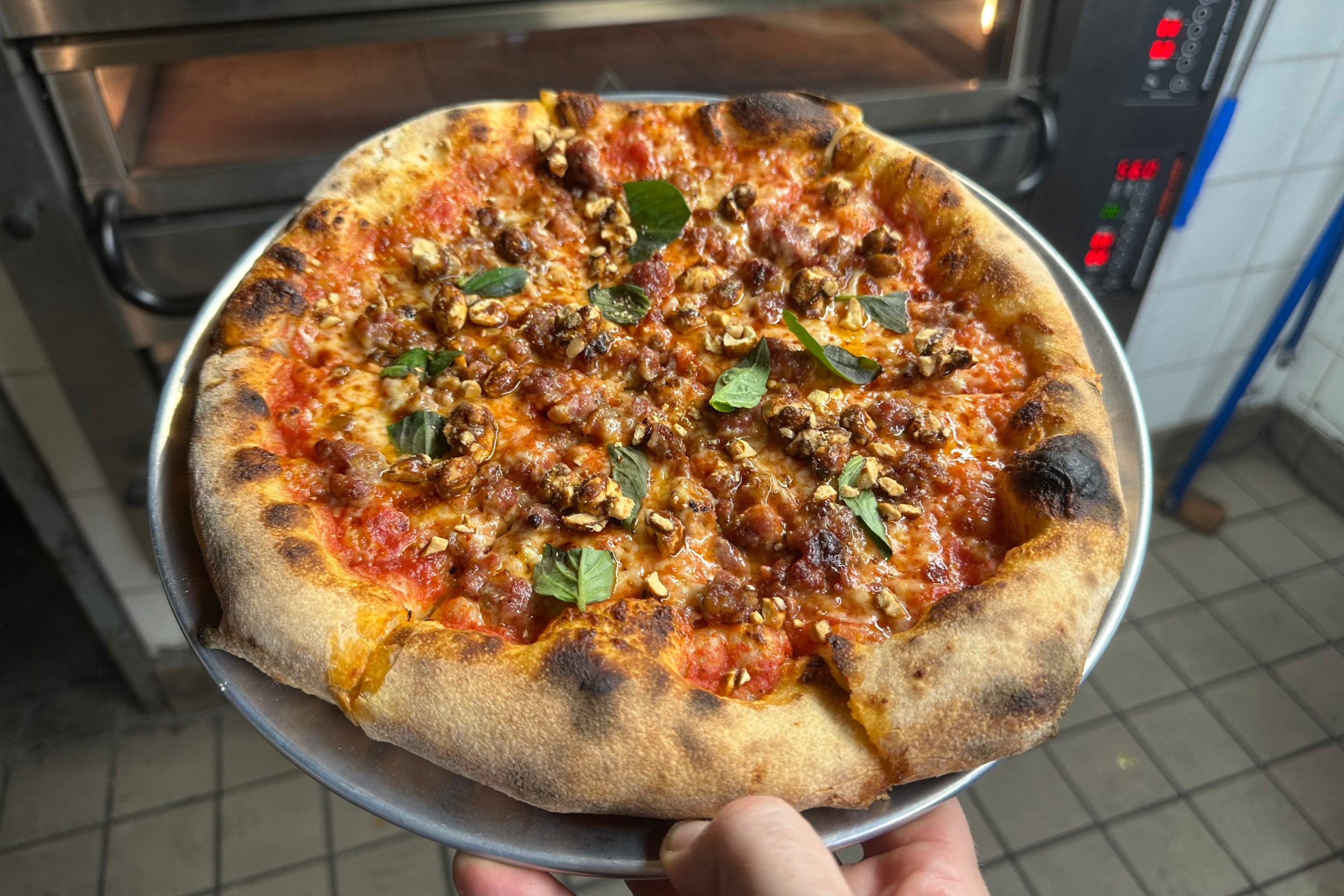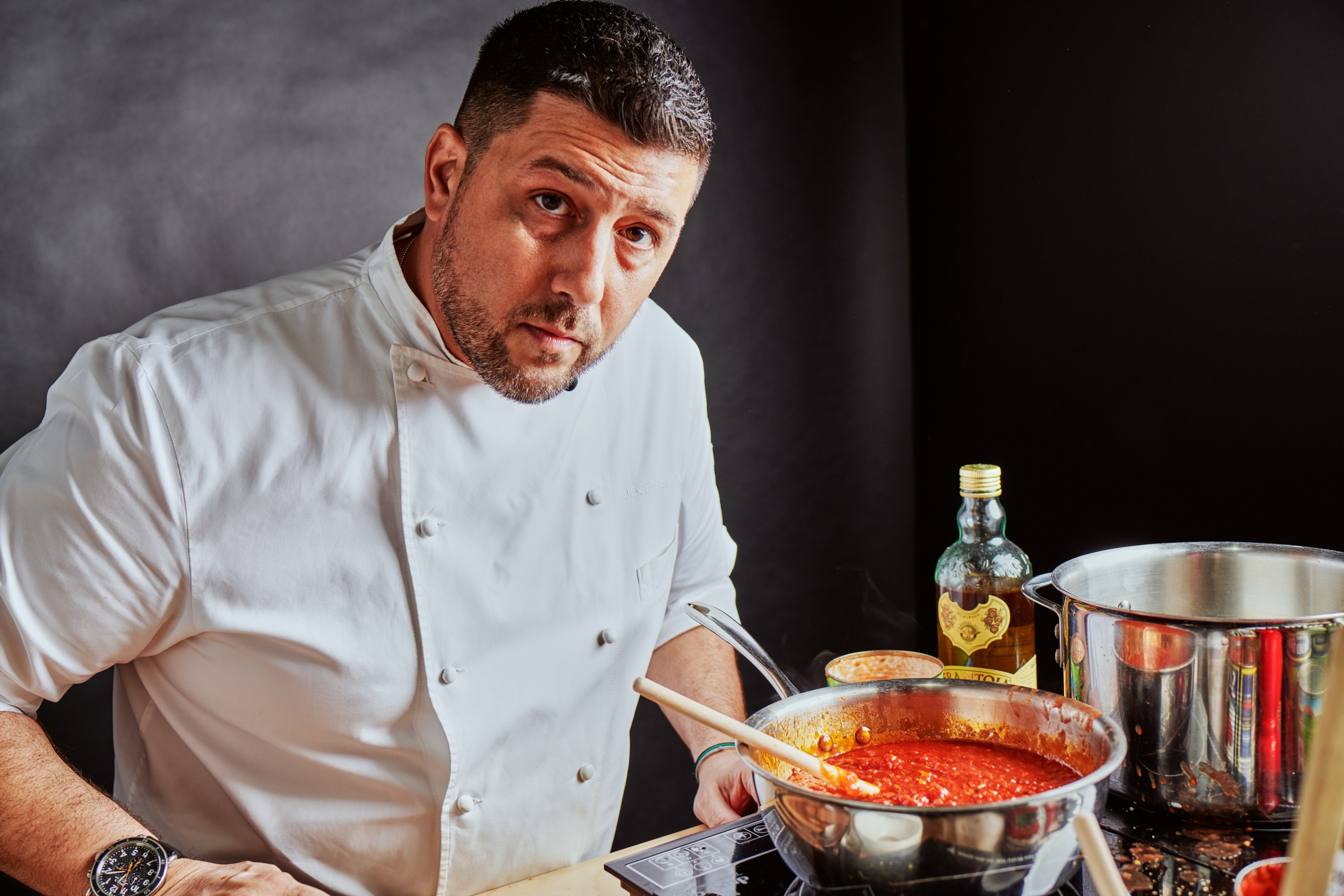Everyone has a different way to make their meatballs. Maybe a grandma or nonna handed down a recipe or technique, or a local restaurant inspired a new take. For many, the combination of beef, pork, and veal yields a superior meatball; for others, keeping it simple is key. Generally, there is consensus about a few things, such as the end result being moist and slightly airy rather than dry and dense.
To try to inspire you (and us) to improve our meatball-making skills, we surveyed some friends of Appetito—from well-known chefs to respected recipe developers—to get insider tips on how to cook the perfect meatball.
Tony Scotto, Chef and Owner, DPNB Pasta & Provisions, Nyack, NY
"Use the best crusty and flavorful bread to make your panade (a mix of starch and liquid) with good whole milk and leave nice chunks of bread in your mix; don't make a paste. Coarse grind your meat and treat your meatballs with the same care and attention you would for a ribeye."
Jordan Frosolone, Executive Chef and Partner, Leopard at Des Artistes, NYC
“Use beef that’s high in fat. If you’re using veal, have the butcher grind it fresh—twice. Everyone says it because it’s true: you don’t want to over-handle the meat when making meatballs. Also, use ricotta as a binder instead of breadcrumbs.”
Rocco DiSpirito, Chef and Television Personality
“Mama's big secret was blending the stock, garlic, onions, and parsley prior to mixing with the meat. It disperses the strong aromatic flavors evenly and helps create an emulsion that gives the meatballs a juicy mouthfeel.”
Cara Di Falco, Founder, Cara’s Cucina
“Nanny always used Pepperidge Farm stuffing in the blue package! Moistened it with some warm water and mixed it in instead of breadcrumbs. Plus we cook our meatballs directly in the sauce (instead of frying first). To this day my Mom makes the BEST meatballs, and I will fight anyone who says otherwise.”
Michael Hanna, Chef and Owner, St. Vito Focacceria, Nashville, TN
"I guess I have a couple of meatball tricks up my sleeve. I like to use leaner meat and cook the meatballs with lots of finesse and also add a tiny touch of baking soda. I don’t like a fatty meatball that renders and becomes dry."

Michele Di Pietro, Founder, Mangia with Michele
“It’s really important not to overwork the ground meat, as it could then toughen up. So, I like to mix all non-ground meat ingredients together in a separate bowl until well-incorporated and then fold this mixture gently into the ground meat. Mixing is still involved, of course, but much less with this technique as opposed to if all of the ingredients were added and mixed together at the same time.”
Bobby Hellen, chef, The Little Grand (DC) and Zillions Pizza (NYC)
"We always want to have a nicely-caramelized meatball rather than a braised one. A great practice that we implemented was roasting in our pizza oven at a high temp to get that caramelization. We then braise it with all the pan drippings and cool all together. This reinforces the tomato sauce and creates a meatball that tastes great and stays together and doesn't break apart easily."
Danielle Caminiti, Culinary Artist & Recipe Developer, Author of From Courtroom to Cucina
“My secret? It’s actually using cooled tomato sauce in the meatball mixture.”
Chef Thomas Perone, Chef and Owner, Brooklyn Roots, NYC
“Don't ever over-mix, make sure the ingredients used are chopped fine, and lastly add an extra egg to the mix.”
Marion Scotto, Owner, Fresco By Scotto, NYC
“Always wet your hands with cold water before forming the meatballs. Also, soak day-old bread in milk as part of the mixture.”







